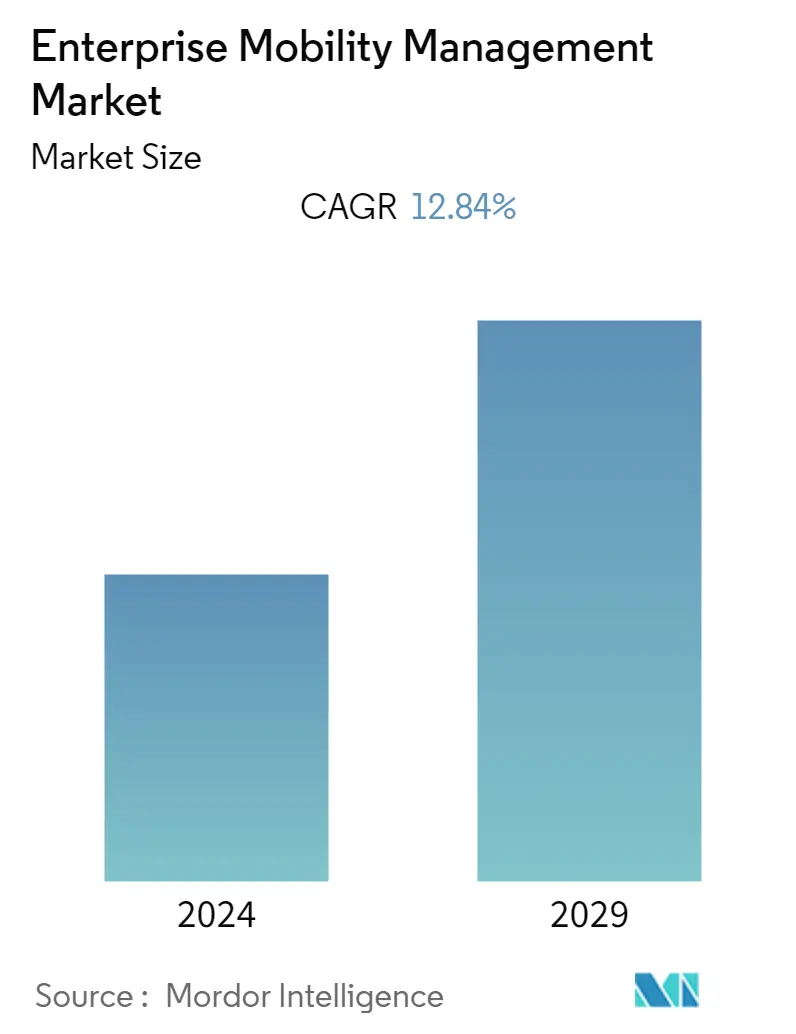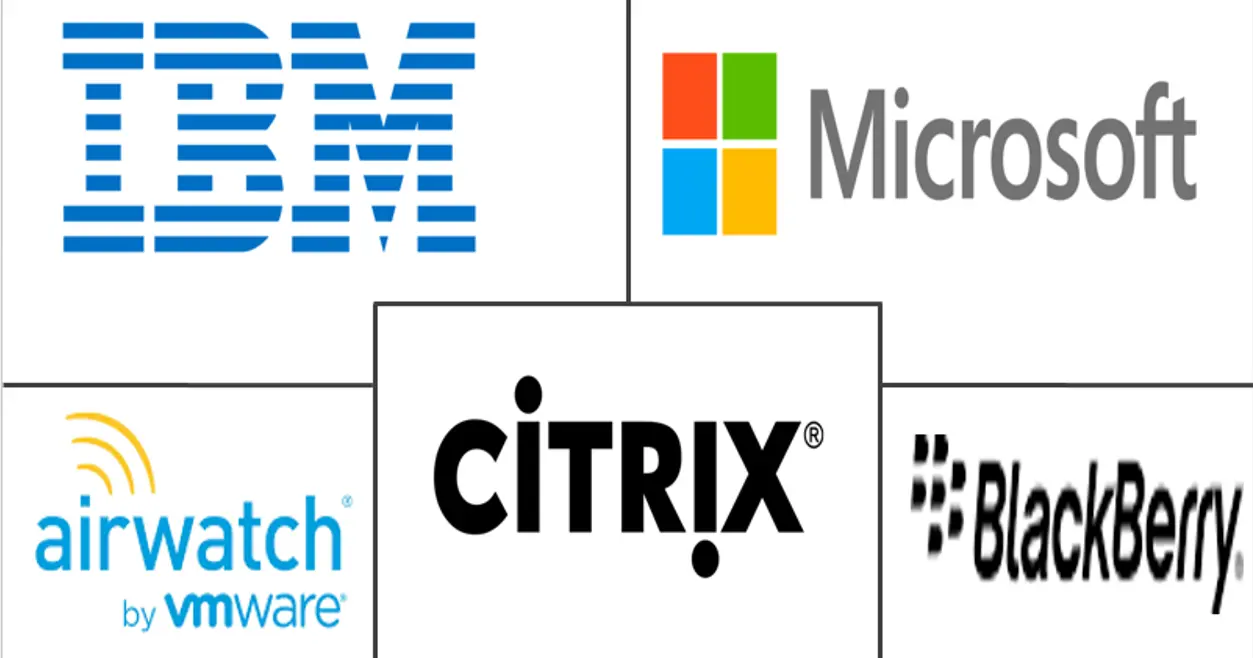Market Size of Enterprise Mobility Management Industry

| Study Period | 2019 - 2029 |
| Base Year For Estimation | 2023 |
| CAGR | 12.84 % |
| Fastest Growing Market | Asia Pacific |
| Largest Market | North America |
| Market Concentration | Medium |
Major Players
*Disclaimer: Major Players sorted in no particular order |
Need a report that reflects how COVID-19 has impacted this market and its growth?
Enterprise Mobility Management Market Analysis
The Enterprise Mobility Management market is registering a CAGR of 12.84% over the forecast period. A comprehensive EMM solution comprises features required for mobile deployments, such as application and content-level control, on a single unified platform. Due to more organizations adopting flexible policies, they are turning toward EMM to supersede the pitfalls of allowing personal devices to access corporate data.
- Enterprise mobility management (EMM) solutions are gaining prominence owing to some of the major enterprise trends, such as bring-your-own-device (BYOD) and choose your device (CYOD) policies, in which companies are allowing employees to use external or internal devices for enterprise-related work. Thus, deploying appropriate controls in companies is expected to benefit them from mobility opportunities while ensuring that sensitive data and devices are safeguarded.
- The growing application of ERP software and CRM systems has increased the use of mobility solutions in the market. ERP is usually a category of business-management software, typically a suite of integrated applications that an organization may use to collect, store, manage, and interpret data from various business activities. According to Computer Weekly, enterprise resource planning (ERP) and customer relationship management (CRM) remain the most vital categories for business applications.
- EMM practices usually incorporate mobile management systems or services to offer intellectual property protections and a security-rich environment for data management. End users, like retailers, require EMM as the employees use smartphones as point-of-sale (POS) devices to scan bar codes, conduct payments, and process transactions. At the same time, banks and allies are pivoting to allow BYOD and require EMM for secure data and regulatory compliance for their financial exchanges.
- The smartphones and related devices used by employees must be able to process data and files in accordance with the workload's requirements in addition to running enterprise apps. Integrating endpoint devices with all organizational systems and achieving seamless synchronization between them is a big challenge for the organization's IT team and is restricting the market growth.
- With the outbreak of COVID-19, most organizations have shifted to the work from the home model due to the lockdown ad social distancing measures that have created a significant demand for managing the application and devices while monitoring the application aspect remotely. Therefore, several companies offering application and device management services are updating and providing a suite of services with the increased demand from the organization for managing their mobile device needs.
